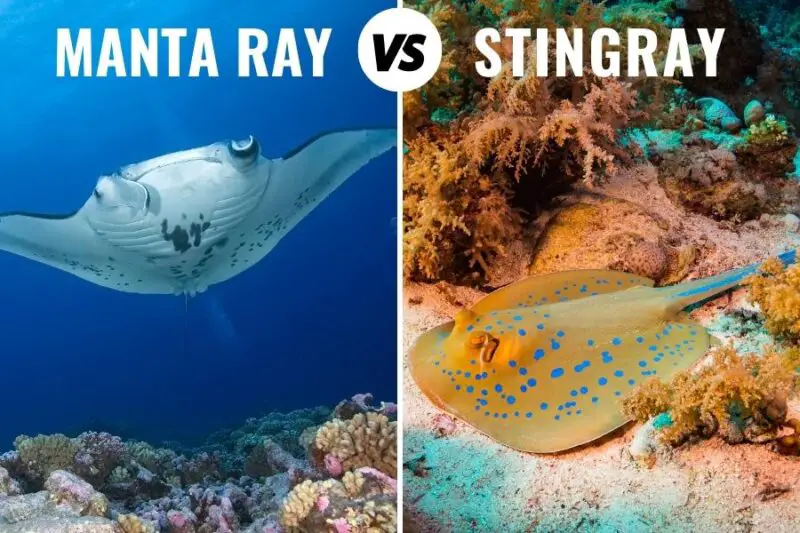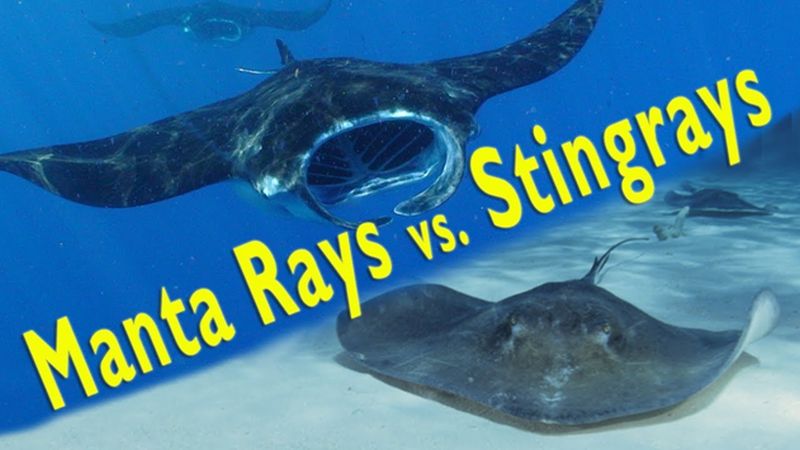

Stingrays are also ovoviviparous and newborn stingrays come out looking like little ravioli, only they’re alive and can swim. Unlike manta rays, female stingrays have around one litter per year, bearing between two and six young after a two to four month gestation period. Stingrays can grow to be 6 ½ feet with a lifespan of 15-25 years. Instead of having a mouth in front, their mouths are located on their dorsal side, along with their gills and nostrils, arranging themselves into a cute, smiley face. Similarly to manta rays, stingrays also have countershading coloration, but their coloring is more murky, dependent on their habitat near the seafloor. There are stingray fossils that date back to nearly 150 million years ago and scientists have found evidence of ancient Greeks using the rays’ spines as anesthetic for dentistry as well as of ancient Egyptian craftsmen and merchants making leather from their skin. The most defining feature of this group is its infamous tail, which is tipped with venomous barbs, and is constantly being shed and replaced. There are more than 200 different species that fall under the classification of stingray. Adult rays, however, have an average life expectancy of 25-40 years. A juvenile ray’s mortality rate is high since the parent does not tend to stay around to raise them, causing a low population growth rate for the species. Gestation period for a female ray is around 13 months long and they only give birth to one or two young. Manta rays are ovoviviparous, so the baby stingray grows inside an egg within its mother and then is born completely developed. Generally, female rays tend to be larger than males and can only be classified if you’re close enough to notice scarring on the back ventral side or fin tips, a sign that the ray is female and has mated with a male ray. Unlike stingrays, manta rays do not possess a “stinger ” they have a harmless, slender tail.

In both groups, their mouths are located at the front of their bodies and they possess cephalic or “head” fins which enable them to funnel food and water more easily. Rays under alfredi are generally smaller, reaching a maximum wingspan of 18 feet, and can easily be identified by their big, blotchy spot patterns located on their ventral side. Rays under birostris have few spots on their ventral side, with wide, gray bands along the back edge of the wings and can reach a wingspan up to 23 feet. Manta rays have countershading coloration, meaning they are dark on top (the dorsal side) and light on the bottom (ventral side). These two groups are extremely similar in looks and behavior, but you can tell them apart by their coloration and markings. Manta rays are classified into two different species groups, the birostris and alfredi.

There are major differences, however, that can enable you to identify a manta ray from a stingray. Their eyes are located on their dorsal (top) side, and they have a long, eerie tail. They both have pectoral fins that have developed into wide, triangular wings, enabling them to glide easily through the water. Both manta rays and stingrays are related to sharks under the cartilaginous fish group chondrichthyes, meaning their structure is built on material similar to that found in our nose and ears. Let’s face it, manta rays and stingrays look pretty similar and you can only spot the differences if you know what you’re looking for.


 0 kommentar(er)
0 kommentar(er)
